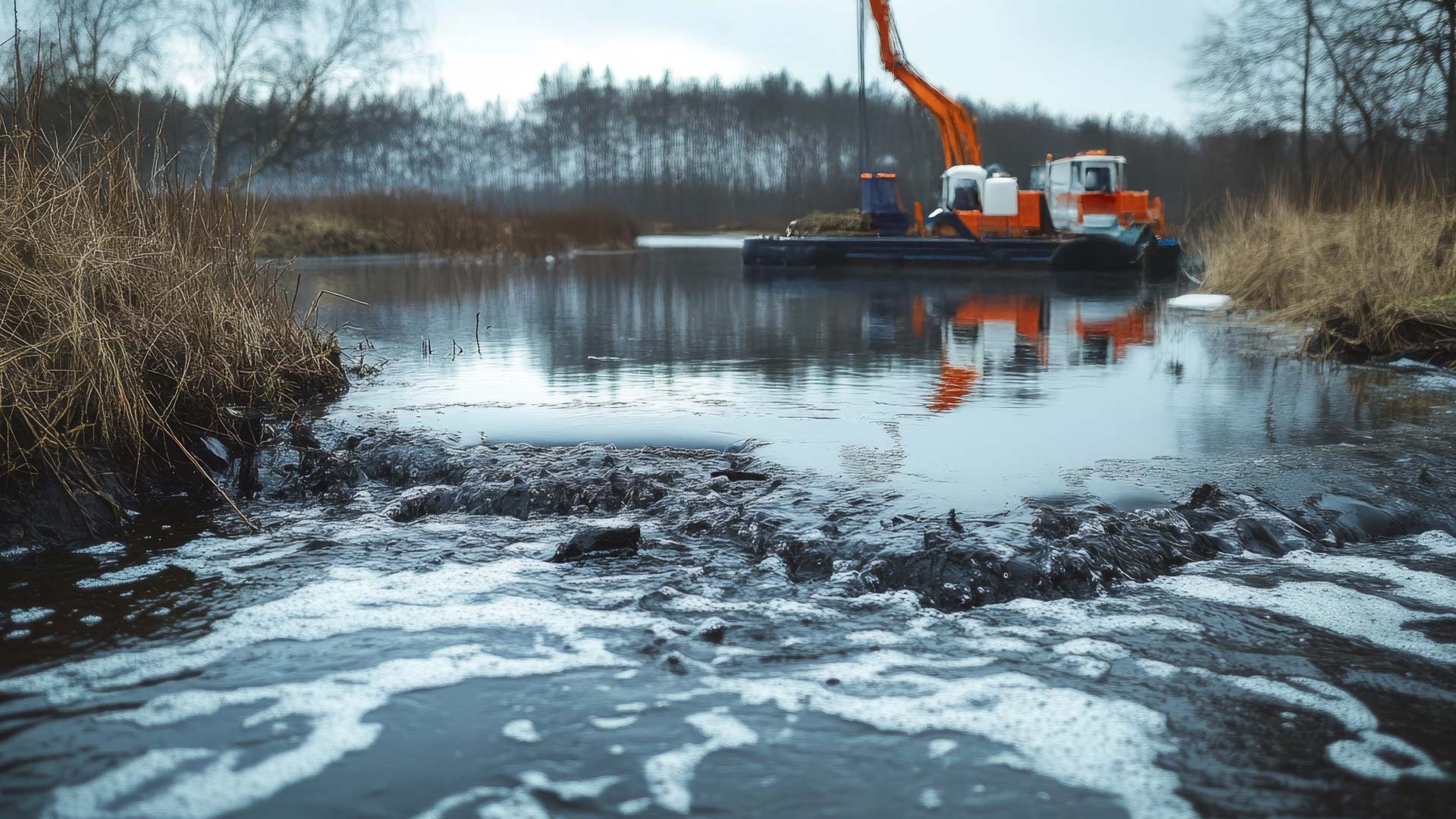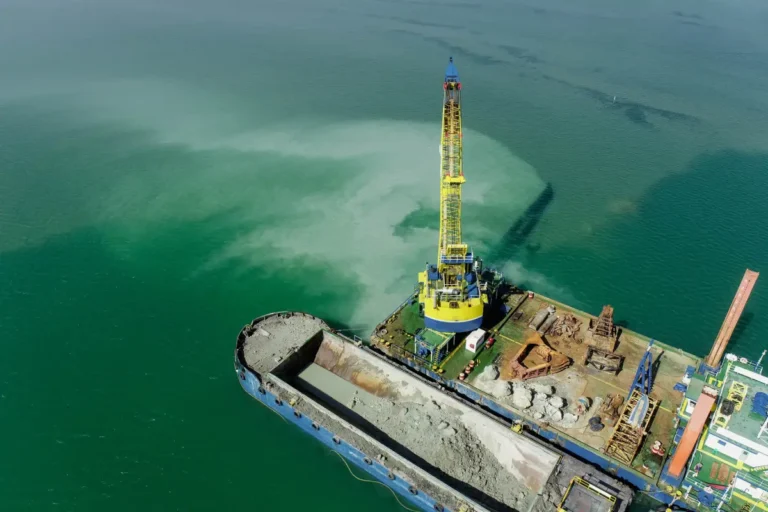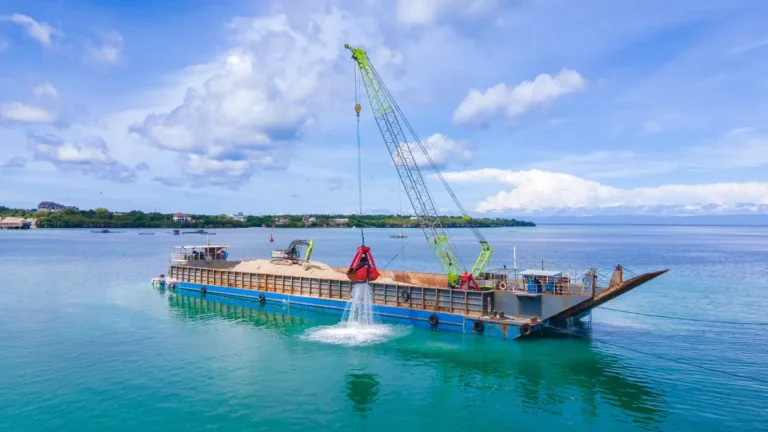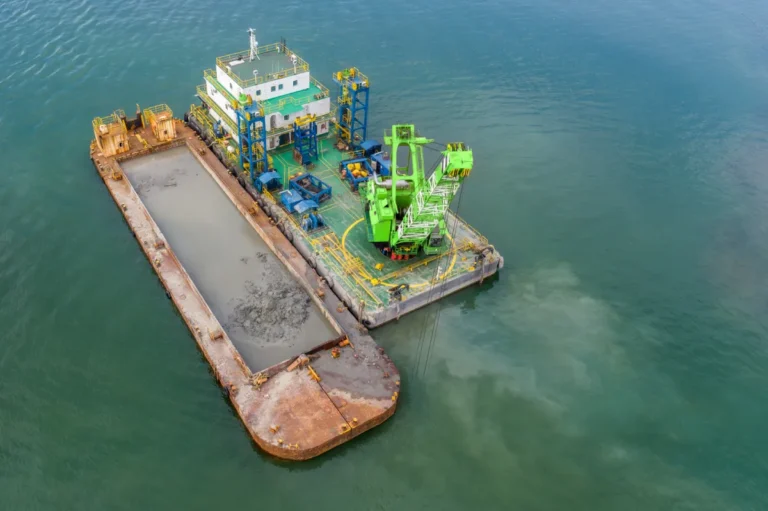Lake dredging is a crucial process for maintaining the health and functionality of water bodies. Over time, lakes accumulate sediment, organic debris, and pollutants, which can lead to reduced depth, poor water quality, and habitat degradation. By removing built-up sediment, dredging helps restore water flow, improve aquatic ecosystems, and prevent shoreline erosion. Additionally, dredging plays a vital role in maintaining recreational waterways, preserving drinking water sources, and ensuring proper flood control. However, despite these benefits, the process comes with significant environmental challenges, particularly when dealing with toxic sediments and water contamination.
Many lakes contain pollutants such as heavy metals, industrial waste, and agricultural runoff trapped within the sediment. When disturbed, these contaminants can re-enter the water column, posing serious risks to aquatic life, water quality, and public health. The act of using a dredge for lake restoration can also increase turbidity, reducing oxygen levels and disrupting the natural balance of the ecosystem. Without proper management, disturbed sediments can spread pollution beyond the dredging site, affecting larger bodies of water.
This article explores the key challenges associated with lake dredging, focusing on the risks of toxic sediment disturbance and water contamination. It will also highlight best practices for ensuring effective dredging while minimizing environmental impact and complying with regulatory requirements.
Understanding the Need for Lake Dredging
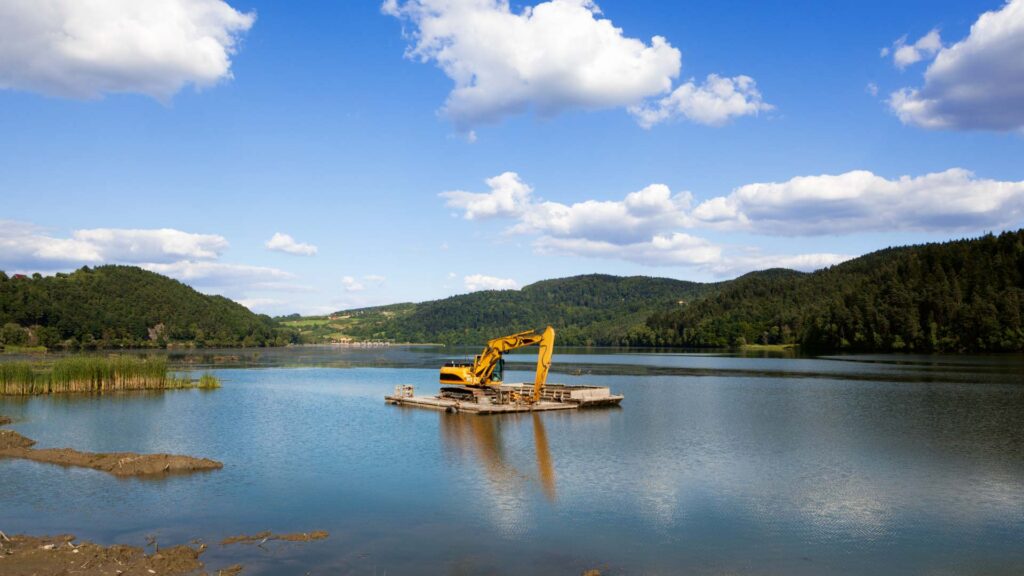
Lake dredging is essential for maintaining the long-term health and functionality of water bodies. Over time, lakes accumulate sediment, organic matter, and pollutants from natural and human activities. Runoff from agriculture, construction, and urban development introduces excess nutrients and debris, which settle at the bottom of the lake. Without intervention, this buildup can lead to reduced depth, restricted water flow, and deteriorating water quality, making dredging a necessary process to restore and sustain lake ecosystems.
Excess sediment accumulation can significantly impact water quality, ecosystem health, and navigability. When organic matter and pollutants settle at the lake bed, they create an environment conducive to harmful algal blooms, oxygen depletion, and increased toxicity levels. These conditions threaten fish populations and aquatic vegetation, disrupting the delicate balance of the ecosystem. Additionally, sediment buildup can obstruct waterways, limiting access for boats and reducing the recreational value of the lake. Municipalities, conservation agencies, and property owners often dredge a lake to remove these obstructions and enhance waterway usability.
Beyond improving access and water clarity, lake dredging plays a critical role in preventing further contamination. Pollutants such as heavy metals, phosphorus, and nitrogen become trapped in sediment layers, creating long-term environmental hazards. If left undisturbed, these contaminants can leach into the water supply, posing risks to both wildlife and human populations. By strategically using a dredge for lake restoration, communities can remove these hazardous materials, reducing the potential for ongoing pollution and safeguarding the lake for future generations.
The Problem of Toxic Sediments in Lakes
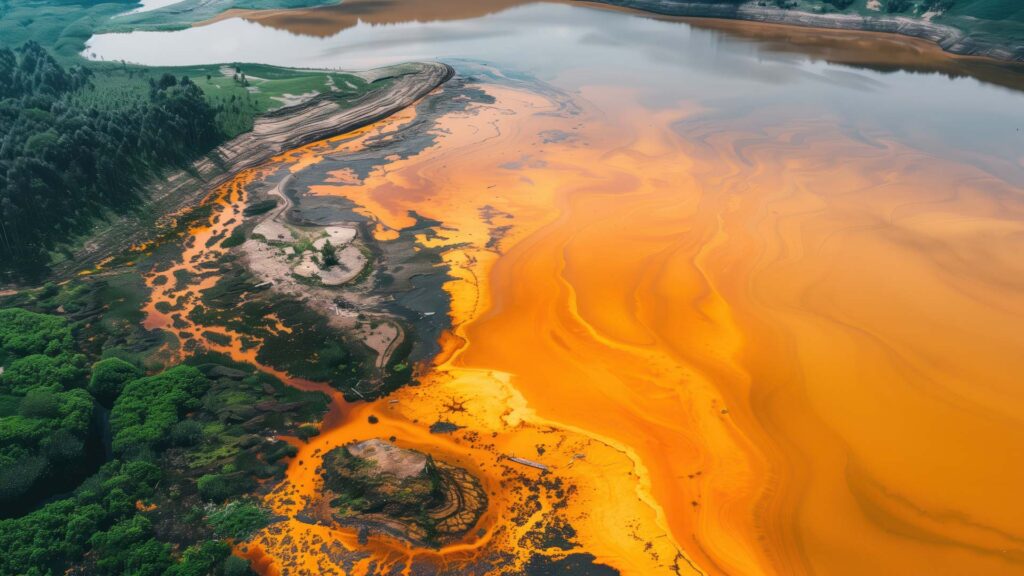
Toxic sediments in lakes pose a serious environmental challenge, particularly when considering the impact of lake dredging on water quality and aquatic life. Over time, pollutants accumulate in lake beds, creating layers of contaminated sediment that can have long-lasting effects on ecosystems. These toxic materials often originate from industrial waste, agricultural runoff, urban stormwater, and natural mineral deposits. Heavy metals such as mercury, lead, and arsenic, along with chemical compounds like pesticides and hydrocarbons, can become embedded in the sediment, turning lake bottoms into reservoirs of pollution. When these materials settle undisturbed, they may pose a limited immediate risk, but any disruption—whether natural or through human intervention—can lead to significant contamination concerns.
One of the major risks associated with disturbing toxic sediments is the redistribution of harmful contaminants. When dredging operations dredge a lake, they remove or relocate bottom sediment, which can cause previously buried pollutants to re-enter the water column. This process may lead to increased toxicity levels, making the water unsafe for aquatic life, recreation, and even municipal water supplies. Additionally, fine sediment particles, once resuspended, can travel beyond the immediate dredging site, spreading contamination to previously unaffected areas. This can result in more extensive water pollution, making containment and monitoring critical during dredging operations.
While lake dredging is often necessary to restore water quality and improve navigability, improper dredging techniques can exacerbate pollution rather than mitigate it. Without proper containment measures, disturbed sediments can release excess nutrients such as nitrogen and phosphorus, fueling harmful algal blooms that further degrade water quality. Furthermore, resuspended heavy metals and toxins can bioaccumulate in fish and other aquatic organisms, posing risks to the entire food chain. Thus, it is essential to employ specialized dredging strategies that minimize environmental impact and prevent pollutants from spreading.
Water Contamination Risks During Dredging Operations

Lake dredging is a necessary process for maintaining water bodies, but it comes with significant water contamination risks if not managed properly. One of the primary concerns during dredging operations is the increase in turbidity, which occurs when sediment is disturbed and suspended in the water column. Excessive turbidity can reduce sunlight penetration, affecting aquatic plant growth and decreasing oxygen levels, which are vital for fish and other aquatic life. Additionally, resuspended sediments often contain harmful substances such as heavy metals, hydrocarbons, and excess nutrients like phosphorus and nitrogen. When these pollutants are reintroduced into the water, they can trigger algal blooms, compromise water quality, and pose health risks for both wildlife and humans.
The impact of dredging on aquatic ecosystems can be significant, particularly when dredging operations dredge a lake with high levels of contamination. Fish and other organisms can experience stress or toxicity from sudden exposure to pollutants, leading to population declines and long-term disruptions in the food chain. Additionally, dredging can disturb bottom-dwelling organisms and essential habitats, reducing biodiversity and altering the ecological balance of the lake. Water treatment facilities that rely on lake water can also be affected, as increased sediment loads and contaminants make it more challenging to filter and purify drinking water. This can lead to higher treatment costs and potential health risks if contamination levels exceed safe thresholds.
To mitigate these risks, lake dredging projects must adhere to strict environmental regulations and compliance standards. Permitting requirements vary depending on the location and the extent of contamination, but regulatory agencies often mandate sediment testing, water quality monitoring, and containment strategies to minimize pollution. Inadequate compliance can result in legal penalties, project delays, and environmental damage, making it crucial to implement best practices that align with local, state, and federal guidelines. Proper planning, advanced dredging techniques, and containment measures are essential to ensuring that dredging operations do not exacerbate water contamination issues while restoring lake ecosystems.
Methods to Dredge a Lake Safely and Effectively

Lake dredging requires careful planning and execution to ensure effective sediment removal while minimizing environmental impact. Selecting the right dredging method is essential for managing contamination levels and restoring water quality. The two primary approaches to dredging a lake are hydraulic and mechanical, each offering distinct advantages depending on the nature of the sediment and the level of contamination present.
Hydraulic dredging is one of the most efficient methods for removing fine sediments and contaminants from a lakebed. This process involves using a suction dredge to pump sediment and water through a pipeline to a designated containment area, where the material is dewatered and treated if necessary. Hydraulic dredging is particularly effective for lakes with high levels of organic buildup, silt, and fine-grained pollutants such as heavy metals and excess nutrients. Since this method minimizes direct disturbance of the lakebed, it helps reduce turbidity and prevents large-scale resuspension of contaminants into the water column. Additionally, it allows for continuous dredging operations, making it a cost-effective solution for large-scale sediment removal.
Mechanical dredging, on the other hand, is better suited for targeted removal of heavier deposits, such as compacted sediments, debris, and coarse materials. This method involves using specialized excavation equipment such as clamshell buckets, backhoes, or draglines to remove sediment from the lake bottom physically. While mechanical dredging is highly effective for removing localized contamination or restoring navigable channels, it can increase turbidity if not properly managed. To mitigate these effects, operators often use silt curtains or containment barriers to prevent disturbed sediments from spreading beyond the dredging site.
Choosing the best method to dredge for lake restoration depends on several factors, including the type of sediment, contamination levels, and environmental considerations. Lakes with widespread contamination and fine-grained pollutants benefit most from hydraulic dredging, while lakes with heavier sediment deposits or debris accumulation may require mechanical dredging. In some cases, a combination of both methods is used to achieve optimal results. Proper sediment analysis, environmental assessments, and adherence to regulatory guidelines play a crucial role in determining the most effective and sustainable dredging approach.
Containment and Treatment Strategies for Contaminated Sediments
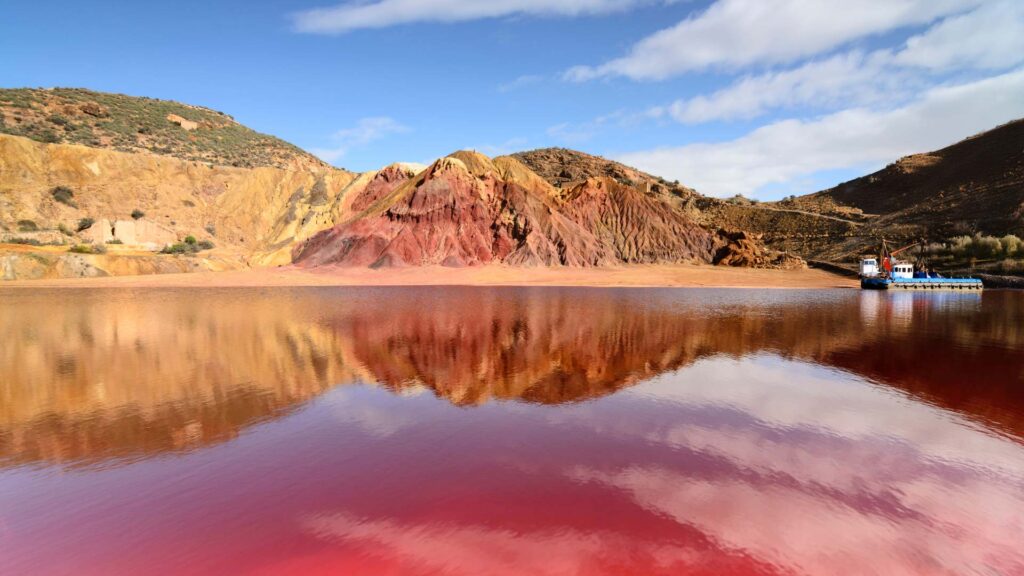
Proper containment and treatment of contaminated sediments are essential to minimizing environmental risks during lake dredging. Without effective strategies, disturbed sediments can spread pollutants into the water column, affecting aquatic ecosystems and water quality. Implementing containment measures, dewatering techniques, and sediment treatment solutions ensures that dredged materials are handled safely and in compliance with environmental regulations.
Silt curtains and containment barriers are commonly used to control sediment dispersion during dredging operations. These floating barriers create a controlled work zone, preventing disturbed sediments from migrating beyond the dredging site. When dredging a lake with high levels of contamination, silt curtains help reduce turbidity, limit the spread of hazardous materials, and protect nearby aquatic habitats. Additionally, containment barriers can be deployed to isolate highly polluted sections of a lake, allowing for more targeted dredging efforts without impacting surrounding waters.
Once sediments are removed, proper dewatering techniques are necessary to manage dredged materials efficiently. Dewatering reduces the water content in dredged sediment, making it easier to transport and dispose of safely. Common dewatering methods include geotextile tubes, sediment basins, and mechanical dewatering presses. These techniques help separate water from solids, ensuring that contaminated materials do not leach pollutants back into the environment. For large-scale lake dredging projects, dewatering is a critical step in reducing the volume of dredged material and preparing it for safe disposal or reuse.
In cases where sediments contain hazardous substances, additional treatment options are required before disposal or beneficial reuse. Chemical stabilization is a widely used method that involves adding binding agents such as lime or cement to immobilize heavy metals and other toxins within the sediment. Bioremediation, another effective treatment strategy, uses microorganisms to break down organic pollutants, reducing the overall toxicity of dredged material. Thermal treatment and solidification techniques may also be applied in situations where contaminants pose a high risk to human health and the environment. By incorporating these treatment methods, dredging operations can effectively manage contaminated sediments while minimizing long-term environmental impact.
Environmental Regulations and Compliance
Environmental regulations and compliance are crucial in ensuring that lake dredging projects are conducted safely and responsibly. Given the potential risks associated with disturbing contaminated sediments, strict laws govern how dredging operations are carried out, how dredged materials are handled, and how water quality is maintained throughout the process. These regulations are designed to protect aquatic ecosystems, drinking water sources, and public health while allowing for the necessary restoration of lakes and waterways.
Several key laws oversee the dredging of a lake and the disposal of contaminated sediment. In the United States, the Clean Water Act (CWA) regulates dredging activities through the Environmental Protection Agency (EPA) and the U.S. Army Corps of Engineers. The CWA requires permits for dredging operations that may impact wetlands or navigable waters, ensuring that projects do not harm water quality or disrupt sensitive ecosystems. The Resource Conservation and Recovery Act (RCRA) also applies when dealing with hazardous sediments, setting guidelines for the safe handling, transportation, and disposal of contaminated materials. Other environmental policies, such as the National Environmental Policy Act (NEPA), mandate environmental assessments before approving large-scale dredging projects.
Obtaining the necessary permits is a critical step before starting any lake dredging operation. Depending on the project scope and location, dredging permits may be required at the federal, state, and local levels. Agencies such as the U.S. Army Corps of Engineers issue Section 404 permits under the CWA for dredging and sediment disposal activities. State environmental agencies may impose additional regulations, particularly if the dredging site is located within protected waters or near drinking water reservoirs. Permitting requirements typically include sediment testing, impact assessments, and plans for mitigating environmental damage. Failure to obtain the proper permits can result in fines, legal action, and project delays.
Once a dredging project is underway, ongoing monitoring and reporting obligations ensure compliance with environmental safety standards. Regular water quality testing is required to track turbidity levels, contaminant release, and overall ecological impact. Compliance reports must be submitted to regulatory agencies detailing sediment management practices, containment measures, and any remediation efforts. In many cases, post-dredging monitoring is also required to assess long-term environmental recovery and ensure that dredging a lake does not lead to unintended pollution or habitat destruction. By following regulatory guidelines and maintaining detailed records, dredging projects can achieve both environmental sustainability and operational efficiency.
Best Practices for Sustainable Lake Dredging
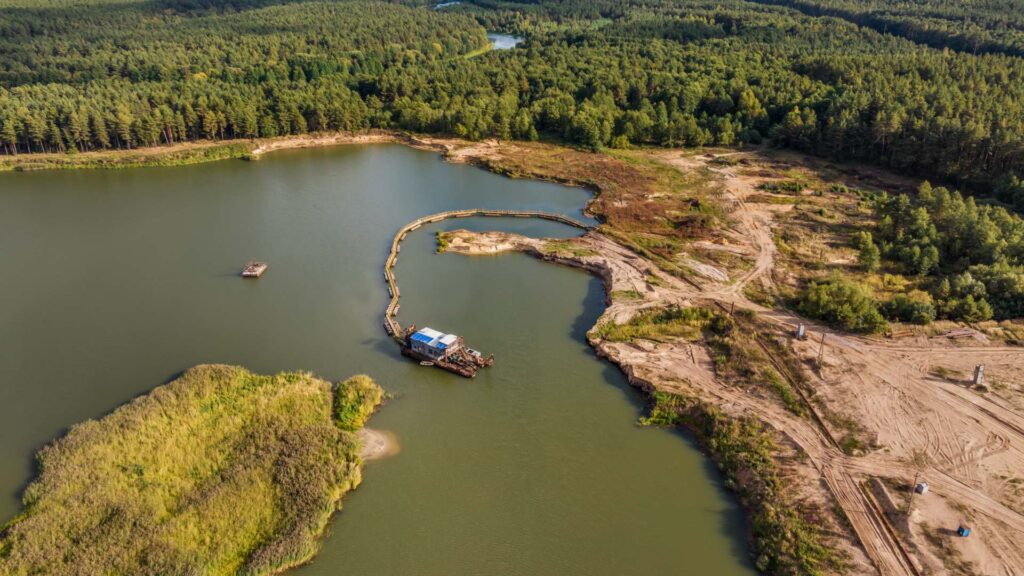
Sustainable lake dredging requires a strategic approach that balances sediment removal with environmental preservation. Without proper planning and execution, dredging can inadvertently introduce new contaminants, disrupt aquatic ecosystems, and lead to long-term water quality issues. By following best practices, operators can ensure that dredging efforts restore lake health while minimizing ecological impact.
Pre-dredging assessments are essential to determine contamination levels and select the most effective dredging method. Before using a dredge for lake restoration, sediment testing is conducted to identify pollutants such as heavy metals, excess nutrients, and organic contaminants. Water quality analysis helps assess baseline conditions, ensuring that dredging operations do not worsen pollution levels. Environmental impact studies also guide containment strategies, helping to prevent resuspended sediments from spreading beyond the dredging site. By thoroughly evaluating sediment composition and contamination risks, operators can implement targeted dredging solutions that enhance water quality without introducing new hazards.
Advancements in dredging technology have significantly improved the sustainability of lake dredging operations. Hydraulic dredging, for example, minimizes sediment disturbance and prevents excessive turbidity by using precise suction methods to remove fine materials. Cutter suction dredges with sediment containment systems help prevent pollutant dispersion, reducing the risk of reintroducing toxins into the water column. Mechanical dredging techniques have also evolved, with environmentally friendly clamshell buckets and specialized excavators designed to limit the impact on aquatic habitats. Additionally, the use of GPS-guided dredging ensures precise sediment removal, reducing unnecessary disturbance to untouched areas of the lakebed.
Post-dredging monitoring plays a critical role in ensuring long-term water quality improvements. Once dredging is complete, ongoing water testing helps track turbidity levels, oxygen content, and potential contaminant release. Regular sediment sampling evaluates whether pollutants have been effectively removed or if additional remediation efforts are needed. Many projects also implement aquatic habitat restoration programs, including native vegetation planting and fish stocking, to promote ecological recovery. By maintaining a comprehensive post-dredging monitoring plan, agencies and stakeholders can confirm that dredging a lake has achieved its intended environmental benefits while preventing future sediment-related issues.
Conclusion
Effective lake dredging is essential for maintaining water quality, restoring aquatic ecosystems, and ensuring the long-term usability of water bodies. However, the challenges associated with toxic sediments and water contamination require careful planning, proper dredging techniques, and adherence to environmental regulations. Without the right containment measures, dredging can disturb hazardous pollutants, increasing turbidity and spreading contamination beyond the dredging site. By employing advanced dredging methods, utilizing silt curtains and dewatering techniques, and following strict compliance guidelines, dredging operations can mitigate these risks while successfully rejuvenating lakes.
Sustainable dredging practices, including pre-dredging assessments, advanced technology, and post-dredging monitoring, help protect both the environment and public health. Whether using hydraulic or mechanical dredging, selecting the right approach based on sediment composition and contamination levels is key to minimizing ecological disruption. Through responsible sediment management and ongoing environmental monitoring, dredging a lake can provide long-term benefits, from improved water clarity and enhanced aquatic habitats to safer drinking water supplies. By prioritizing environmental stewardship, regulatory compliance, and innovative dredging solutions, lake restoration efforts can be both effective and sustainable.


